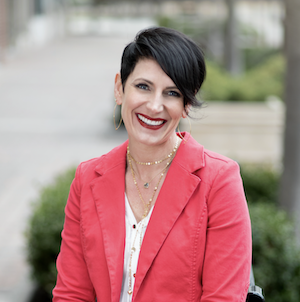
Childhood Apraxia or Not Childhood Apraxia...That is the Question
February 13, 2019
We love us some Jennie Bjorem and were thrilled to collaborate with her last September on a screening tool for differential diagnosis of childhood apraxia of speech (CAS). The informal screener will be published soon! So check back here to grab your copy.
Childhood Apraxia or Not Childhood Apraxia…That is the Question, by Jennie Bjorem, M.A. CCC-SLP
Childhood apraxia or not childhood apraxia…that is the question. With CAS being a “less than confident feeling” disorder to diagnosis and treat, SLP Toolkit and I teamed up to help guide you in your clinical decision making. We know that the consensus in determining a differential diagnosis of CAS (CAS vs. speech delay or other speech sound disorders) is “difficult” and in many school districts perceived to be a medical diagnosis (where SLPs are not allowed to give a formal label). However, the ASHA position statement is clear on the role of the SLP and differential diagnosis of CAS.
ASHA’s policy is that both diagnosis and treatment of childhood apraxia of speech (CAS) are the role of certified SLPs with specialized knowledge in motor learning theory, skills in differential diagnosis of childhood motor speech disorders, and experience with a variety of intervention techniques (that may include augmentative and alternative communication and assistive technology). ASHA’s 2017 Position Statement states that it is the certified speech-language pathologist who is responsible for making the primary diagnosis of CAS, for designing and implementing the individualized and intensive speech-language treatment programs needed to make optimum improvement and for closely monitoring progress. As SLPs, with the proper training and advanced knowledge in motor learning, we are able to take this information and use it to support our informed clinical decision regarding a differential diagnosis and the appropriate approach for each individual student.
The best way to assess a speech sound disorder including childhood apraxia of speech is to look at the child’s speech productions across different speech tasks, both elicited and spontaneous. To confirm or rule out CAS, SLPs need to be educated and familiar with the characteristics and how those characteristics differ for apraxia vs. other speech sound disorders or motor speech disorders (e.g., dysarthria).
Being sure you understand the WHY in the screening and assessment process for CAS is one of our biggest goals. WHY do you need to assess across speech tasks? WHY do you need to have the child repeat the testing targets? WHY is it important to do a non-speech oral motor exam? WHY do we observe spontaneous vs. imitated vs. elicited responses? WHY do we use cueing during testing? SLP Toolkit and I have taken the time to define the terms used in our screening procedure. WHAT is an intrusive schwa? WHAT does initial articulatory configuration mean? Answering these questions are crucial to your understanding of making a differential diagnosis and planning for a correct therapeutic approach.
With the SLP Toolkit screening process you will encounter easy to follow instructions, WHY explanations, and definitions of CAS terms and identifying characteristics. The motor speech screening will walk you through a non-speech oral motor exam, a sound inventory, multiple speech tasks based on syllable structures, a speech sample, prosody assessment, and repeated repetitions to help identify key characteristics of CAS. We have defined cueing strategies to use in your screening to gain a better understanding of each child’s cueing level. Having this research-based resource to dissect a child’s speech and determine a course of treatment is going to be a game changer!
This process will guide you to help identify those students who will benefit from a motor planning approach rather that a traditional phonological approach. Research shows that a child with CAS will make significantly better progress with a motor planning approach because it is a disorder of planning and programming movement for speech. The correct approach begins with correct identification and the appropriate goals, and SLP Toolkit is making that happen!
Click here to check out a sneak peek of the Childhood Apraxia Informal Screening Tool!
Our hope is that YOU will feel empowered when deciding on an approach to therapy for those children in question, be able to choose appropriate goals to support a motor planning approach and turn CAS into a “confident feeling” disorder to clinically identify or diagnosis. After all, CAS is a speech label, not a medical diagnosis. WE, with the correct training and tools, the SLPs, are the ones that identify, diagnosis and treat CAS.
We encourage you to take the time to read through ASHA’s 2017 Position Statement on CAS, visit the Apraxia Kids website and take courses to help you grow your knowledge in the areas of identification, diagnosis and treatment of CAS.
Jennie
References:
American Speech-Language-Hearing Association. (2007b). Childhood Apraxia of Speech {Position Statement]. Available from www.asha.org/policy
Campbell, T. (1999). Functional treatment outcomes in young children with motor speech disorders.
Caruso, A. & Strand, E. (Eds.). Clinical management of motor speech disorders in children (p 394). New York, NY: Thieme Medical Publishers Inc.
Shriberg, L. D., & Strand, E. A. (2014). A diagnostic marker to discriminate childhood apraxia of speech from speech delay. Paper presented at the Seventeenth Biennial Conference on Motor Speech: Motor Speech Disorders & Speech Motor Control, Sarasota, FL.
About the Author

Jennie received her bachelor’s degree in Communication Sciences and Disorders from Saint Louis University and graduated from Truman State University with her master’s degree in Communication Sciences and Disorders in May 1999. She has a great understanding from a parent perspective as she has a young child with special needs. She is the owner of Children’s Therapy Services in Leawood, Kansas. Jennie’s area of expertise is in early intervention birth through 5, parent education and childhood apraxia of speech. She completed the Advanced Training Bootcamp with Apraxia Kids this year, presented at the Apraxia Kids national conference and has had over 75 hours of CAS training this year. Jennie is the creator of the Bjorem Speech Sound Cues for acquisition of speech and literacy. With her growing caseload of children with apraxia, she saw a need for visual cueing that young children could understand. Jennie designed, produced and self-published the cue set.



